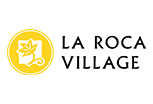It’s happened in many riding regions, and Catalonia is no exception: major roads reached the Pyrenean valleys much later than the rest of the territory. Their steep terrain always kept the inhabitants slightly separated from the world, which accentuated unique social and cultural characteristics that persist today. In the province of Lleida, there are several interesting museums for exploring this cultural heritage, such as the Espai Raier in La Pobla de Segur, dedicated to the ancient river transport systems for moving wood along the Noguera Pallaresa River. Esterri d’Àneu is the backbone of the Valls d’Àneu Ecomuseums, a new museum concept that brings us closer to the Pallars lifestyle of the turn of the century through a series of interactive exhibits. In Vilamòs, you can visit the Joanchiquet Museum, a traditional house from the seventeenth to nineteenth centuries, that recreates life in the Val d’Aran during this era.
At Boí, Taüll, Erill la Vall, Barruera, Durro, El Pont de Suert, Llesp, Casós, Vilaller and Senet, in the comarca (local district) of L’Alta Ribagorça; Arties and Les, in the Val d’Aran; Isil and Alins, in El Pallars Sobirà, and La Pobla de Segur, in El Pallars Jussà, it is possible to see the “falles” (burning torches) of the Catalan Pyrenees. This is a traditional festival which has been recognised by UNESCO as part of humanity’s Intangible Cultural Heritage. Over several days, at around the time of the summer solstice, which may vary from village to village, festivities are held which are crowned by the “falles”. In this ceremony, torches are set alight and logs are carried down the mountainside, and to the village, by local young people. Once there, a bonfire is lit and the celebrations are accompanied by music and traditional dancing.

















